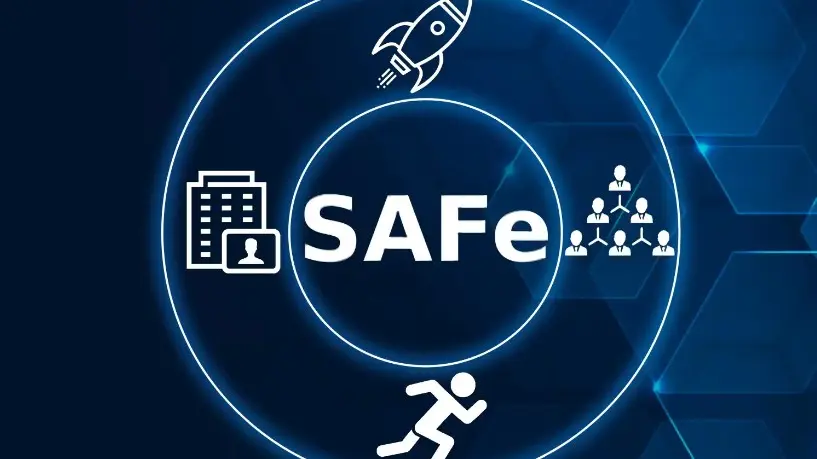The world of Agile teams and software development, along with project management, keeps evolving on a day-to-day basis. While firms expand their scales, managing several Agile teams creates inefficiencies due to poor synchronization of business goals. This is where SAFe Scaled Agile Training comes in. It helps execute a system-based scaling of Agile methodologies within giant companies by being better organized in coordination, the delivery time turns faster, and efficiency improves. It is important to understand this training for those practitioners who want to apply Agile at scale and achieve business success.
What Is SAFe And Why Is It Important:
SAFe, or Scaled Agile Framework, is an official framework through which businesses can scale Agile ideas onto big projects. While regular Agile is for small teams, SAFe allows multiple teams to collaborate without being overly rigid. SAFe delivers clear processes, roles, and responsibilities to ensure various teams work smoothly together. Most companies use SAFe to increase the implementation of projects, increase productivity, and deliver customer value in less time.
Key Principles:
SAFe is strictly based on a framework of guiding principles through which organizations can effectively implement Agile. Among some of the key principles are the following: having a Lean-Agile mindset, team alignment, customer-centric product development, and making decisions fast. Transparency, collaboration, and relentless learning are also at the heart of SAFe. By these principles, companies can attain greater efficiency, eliminate waste, and better business results.
The Four Configurations Of SAFe:
SAFe comes in different configurations depending on the needs of different organizations. Essential SAFe is the most basic of all and is used by those organizations that prefer scaling Agile to a few teams. Large Solution SAFe is applied by those companies that have more than one team that is striving to build intricate systems. Portfolio SAFe aids businesses in scaling Agile teams to strategic objectives, whereas Full SAFe is the most extensive and integrates all SAFe features for full enterprise agility.
Advantages Of SAFe Scaled Agile Training:
SAFe training adds so much to the individual and the company. For the professional, career is supported with competence for managing Agile at scale. Training also supports cross-team integration, through enhanced communication and alignment. To the company, enhanced productivity, reduced project delay, and improved end-product quality are advantageous. Above all, professionally trained SAFe personnel facilitate the proper adoption of Agile by companies and thereby ensure growth and survival in the long term.
SAFe Roles And Responsibilities:
The defined roles are prescribed in order to enable agile execution to be implemented successfully. Roles that are quite crucial include Agilist, Scrum Master, Product Owner, and Release Train Engineer. All these play significant roles in enabling effective collaboration and delivery of quality products. SAFe Agilist is responsible for the implementation of Agile transformations, and SAFe Scrum Master for ensuring that Agile processes are smooth. The Product Owner wishes to deliver value to the customer, and the Release Train Engineer governs Agile Release Trains for effective implementation.
Common Issues In SAFe Adoption:
While it’s beneficial, going with SAFe is not without its downsides. One of the largest issues is that it will be met with stiff resistance from teams that have been using Agile in a traditional manner. Miscommunication between teams is also a challenge, which is why processes need to be delineated. Bringing SAFe into existing business processes is also attempting if not provided with proper training and leadership direction. But these constraints can be overcome by good training, good leadership, and ongoing improvement.
Why Is SAFe Different From Other Agile Frameworks:
SAFe is different because it gives a systematic approach that weighs business goal-oriented teams against some flexibility of discretion. Unlike LeSS, which has its major concentration at the team level with Agile practices, SAFe gives Agile transformation solutions at the enterprise level. Again, DA leaves a lot of room for scaling Agile, whereas SAFe has a formal and more detailed framework, and it is this formalism that has made it the go-to framework for most large organizations.
The Leadership Role In Adopting SAFe:
SAFe implementation is dependent on leadership. Leaders drive Agile transformations by creating learning and collaborative cultures. Leaders are responsible for ensuring that teams are taught the significance of Agile values and are equipped with the tools and training they need. Through goal and innovation creation, leaders can enable organizations to gain sustainable Agile success.
Conclusion
With the increased adoption of Agile, the need for trained professionals is increasing. Pune, being a key IT hub, is witnessing high growth in Agile practices across various industries. There are numerous companies in the region looking for trained professionals who can handle Agile at scale, making SAFe Training in Pune highly valuable. Career professionals can benefit from this training, gaining hands-on experience that qualifies them to make significant contributions to Agile transformations. As more companies embrace SAFe, training programs continue to be in high demand among professionals looking to increase their competencies and drive the growth of business.
Also Read-Innovative Technologies for Personalized Apnea Therapy: Automatic CPAP Machines
